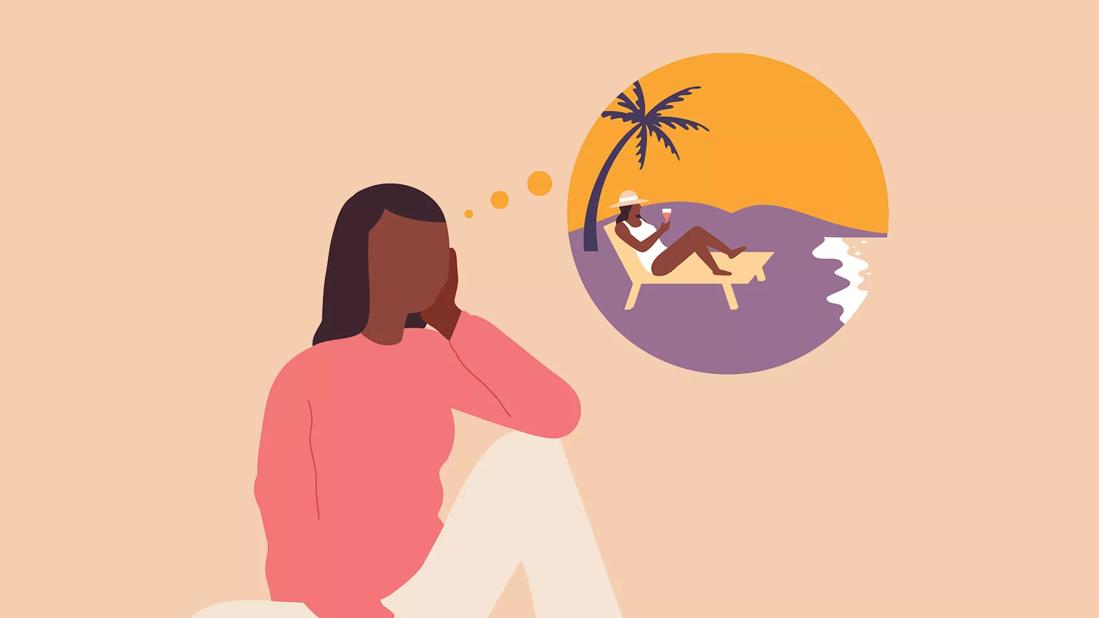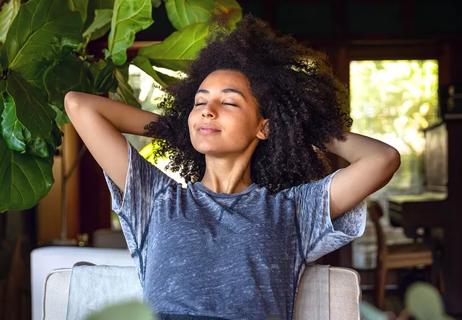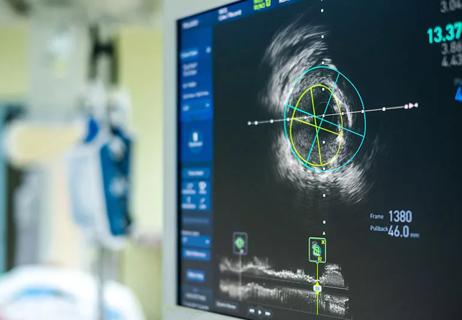Mentally going to a peaceful place can ease stress and boost your health

Want to get away? Doing so can be as easy as closing your eyes and using “guided imagery” to take you to a place where there’s no room for the frustrations of daily life.
Advertisement
Cleveland Clinic is a non-profit academic medical center. Advertising on our site helps support our mission. We do not endorse non-Cleveland Clinic products or services. Policy
The concept is simple: Imagine a peaceful place — a sun-soaked beach, for instance — and then mentally transport yourself to the tranquil setting. The idea is to build a sense of calm and ease tension to lift your mood.
Ahhhhh… Sounds good, right? So, let’s find our way there with the help of health psychologist Grace Tworek, PsyD.
Guided imagery is a relaxation technique designed to reduce stress. “We deal with so many stressors in life — and these stressors can result in negative effects on our overall health,” says Dr. Tworek.
Physical and emotional signs of stress can include high blood pressure, exhaustion, depression and many more symptoms that take a toll on your body.
Dr. Tworek compared managing stress to setting the temperature in your home.
“Think of stress as making your body run hot,” explains Dr. Tworek. “When we learn to relax through mental exercises like guided imagery, it’s like turning on the AC to bring that temperature down.
“It sets the thermostat to make you more comfortable and — with practice — allows your body to learn to regulate itself.”
It starts with directing your thoughts toward a special place. Maybe it’s a beach, a forest path or a bench along a quiet walkway. Whatever it may be, close your eyes and build the scene in your mind.
Advertisement
Focus on your senses, working through them one by one. What might you see? Do you hear noises? Is there a scent in the air? Can you feel the breeze on your skin?
“It’s about immersing yourself and focusing on specific details,” says Dr. Tworek.
Many people start their guided imagery journey with a voiced script that asks questions to help build the framework of your setting. (A quick Google search can provide a host of resources.) Therapists can assist in setting and personalizing the scene, too.
The more you do the exercise, the less you may need a script or outside assistance.
“Once you practice it regularly, your brain may start to fully form the scene without the prompts,” notes Dr. Tworek. “It becomes easier to return back on your own when you need to.”
By mentally removing yourself from a stressful situation, guided imagery can bring immediate results. Expect your breaths per minute to decrease as you enter a state of calm. Your heart rate might also dial it down a few notches.
Frequent practice can help make this exercise effective during stressful moments, as well.
“When you’re able to slow things down physiologically, it helps your mood,” says Dr. Tworek. “Life just feels better.”
That can also lead to the following boosts:
Dragging the stress of your day to bed is a surefire way to lie awake at night. Guided imagery can help you detach from those worries to catch some ZZZs. “Removing yourself from stressful thoughts can promote the relaxation you need to fall asleep,” notes Dr. Tworek.
A key tip: If you’re still awake in bed after 20 minutes, try going to a different room for a guided imagery session. Returning once you’re in a more relaxed state may make it easier to doze off.
Guided imagery can help you disconnect from physical pain. “By bringing in pleasant mental images, it’s sometimes possible to decrease feelings of pain,” says Dr. Tworek. “You bring your mind to a better moment, meaning you’re less focused on your pain.”
One study even indicated that guided imagery could be an effective tool to significantly reduce pain intensity in those who have cancer.
Negative thoughts often fuel depression and anxiety, so going to a positive place in your mind can help counteract those feelings.
So, what’s the best way to get started on a guided imagery expedition? Here are a few tips:
Advertisement
Anyone who has stress could benefit from guided imagery — so that basically covers pretty much everyone on the planet.
“We all experience stress one way or another, and finding ways to manage that is beneficial,” says Dr. Tworek. “It’s important to allow yourself the time to relax. We all need that mental break. Make sure you take it.”
Advertisement
Learn more about our editorial process.
Advertisement

8 ways to fight extreme stress when you’re barely getting by

Most recommended precautions center around minimizing bruising or swelling

Even one drink can have an impact on your cognitive function leading to slurred speech, blurred vision and impaired memory

Understand who may (and may not) benefit

Lorem ipsum dolor sit amet. Et odio Quis vel ipsam omnis eum alias deleniti et placeat impedit non voluptas galisum hic autem enim et cupiditate aliquid. Est beatae quidem non facilis autem ut commodi nisi aut tempore rerum et dolores voluptatem cum enim optio id sapiente quasi. Ad laboriosam officiis 33 cupiditate sequi ea voluptatum consectetur qui necessitatibus voluptate et quasi doloremque et facere explicabo quo explicabo officia

Seeking help through therapy can be an important step in improving your quality of life when you have UC

Type 2 diabetes isn’t inevitable with these dietary changes

Applying a hot or cold compress can help with pain